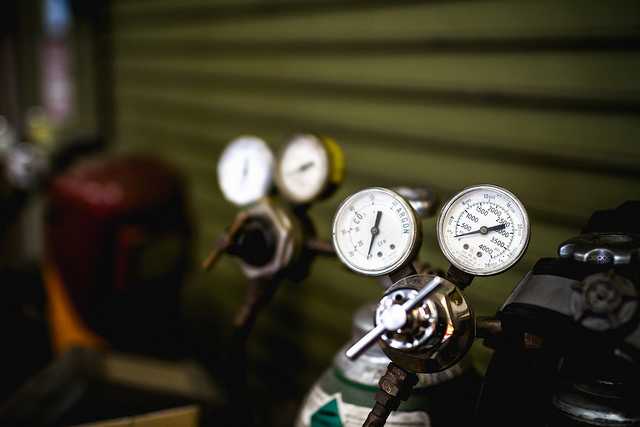
Photo by aepoc
Argon was not discovered until 1894 by Sir William Ramsay and Lord Rayleigh, even though it was suspected to be present in air by Henry Cavendish in 1785. Being the third noble gas, in period 8, argon makes up about 1% of the planet’s atmosphere. This chemically inert element is 2.5 times as soluble in water as nitrogen and has approximately the same solubility as oxygen.
Argon is odorless and colorless in both its gaseous and liquid forms. It cannot be found in any compound. Since the atmosphere contains just 0.94% argon, this gas is isolated through liquid air fractionation. In contrast, the Martian atmosphere contains 5 ppm Ar-36 and 1.6% of Ar-40. The supply is virtually inexhaustible because world production exceeds 750.000 tonnes per year.
Uses
Normally, argon is used in situations where materials need to be protected from other gases or oxygen. A great example is an incandescent lightbulb. It consists of a clear glass bulb and a metal wire inside. An electric current goes through the wire, causing it to get hot and produce light. Oxygen easily combines with the hot metal, forming a compound of the oxygen and metal. Since this compound won’t conduct an electric current, the lightbulb will stop producing light. However, argon is used to prevent it.
It will not react with the hot wire because argon is inert, leaving the metal hot for long periods of time. Therefore, the lightbulb will stop producing light only when the metal breaks. Argon is also used in argon-dye lasers and argon lasers. A device that produces very bright light of a single color is called laser. Skin conditions are treated with an argon laser. This laser shines a green-blue light on the skin’s affected area. Hemoglobin absorbs the energy from the laser and converts it to heat.
Hemoglobin is the protein pigment that can be found in the red blood cells. It transports carbon dioxide from the tissues and oxygen to them. The blood vessels are damaged and then sealed. They are prompted to decompose and then reabsorb into our bodies. Dark spots are lightened and unwanted growths are flattened, with only a small risk of scarring. Argon is used in welding, which is a process in which two metals are joined to each other. Usually, the two metals are heated to high temperatures and they melt together as they get hot.
However, the metals start to react with oxygen as they get hot. During this reaction, a compound of oxygen and metal is formed. If the two metals have formed compounds, it becomes very difficult to join them. But, their bond improves if the argon is introduced into the welding environment. An argon-dye laser is sometimes used in eye surgery. The laser produces the light and its color can be adjusted with high precision, ranging across the blue-to-green color range.
Every shade of blue or green has a slightly different frequency. In addition, it can penetrate less or more deeply in the eye. Furthermore, the laser can also be adjusted to treat a specific part of the eye. The argon dye is used to treat damaged blood vessels, tumors, conditions involving the retina, as well as other kinds of eye problems.